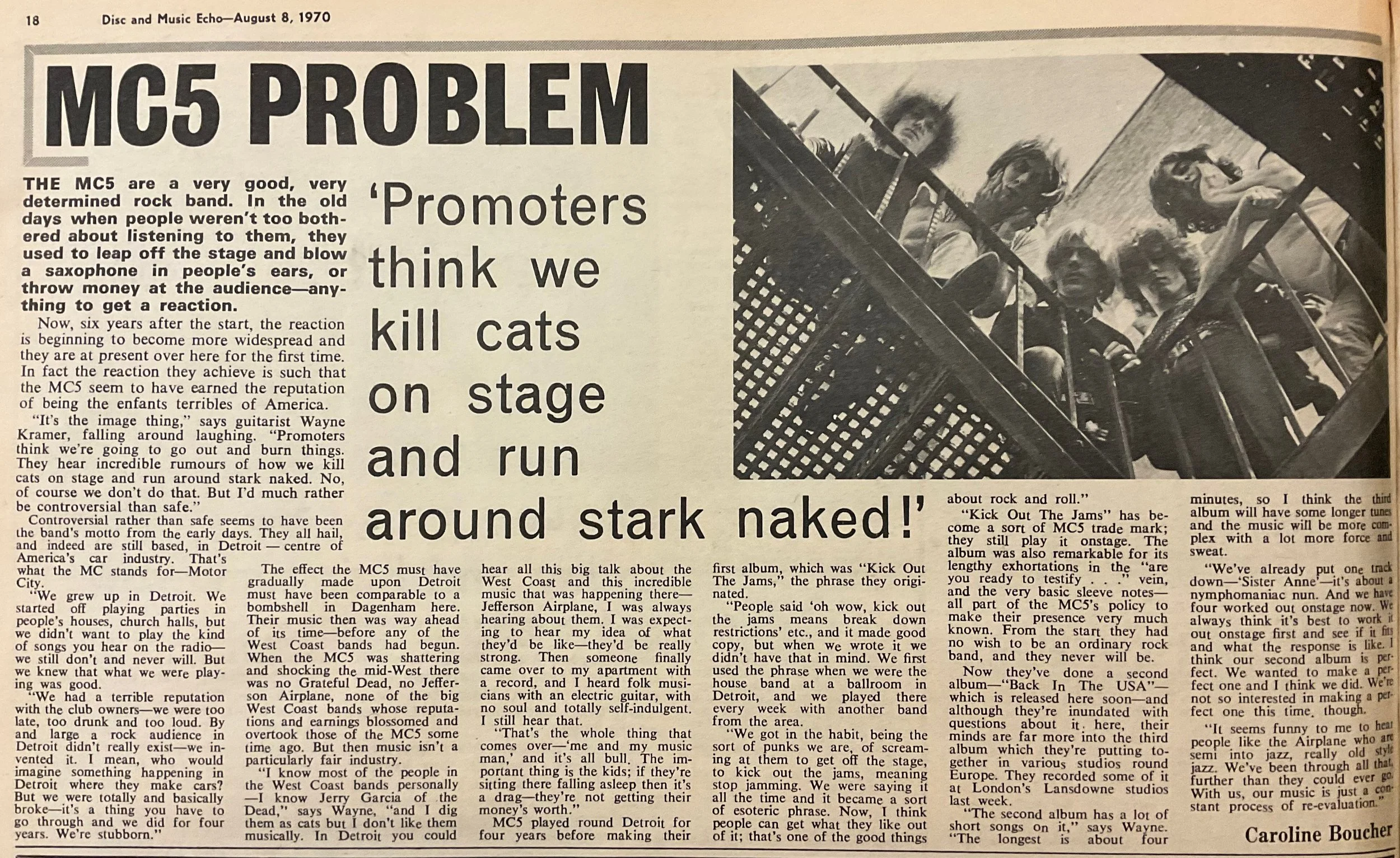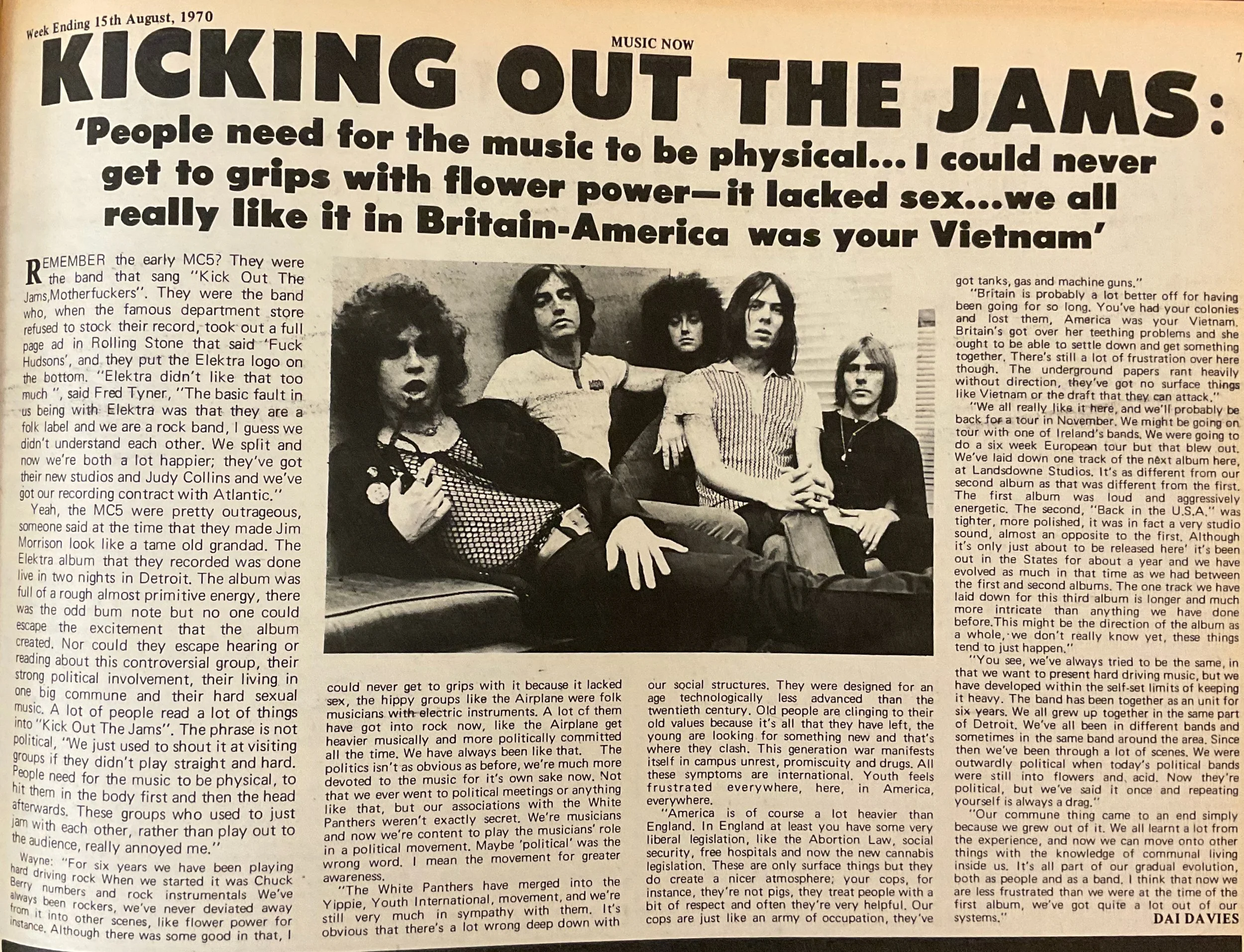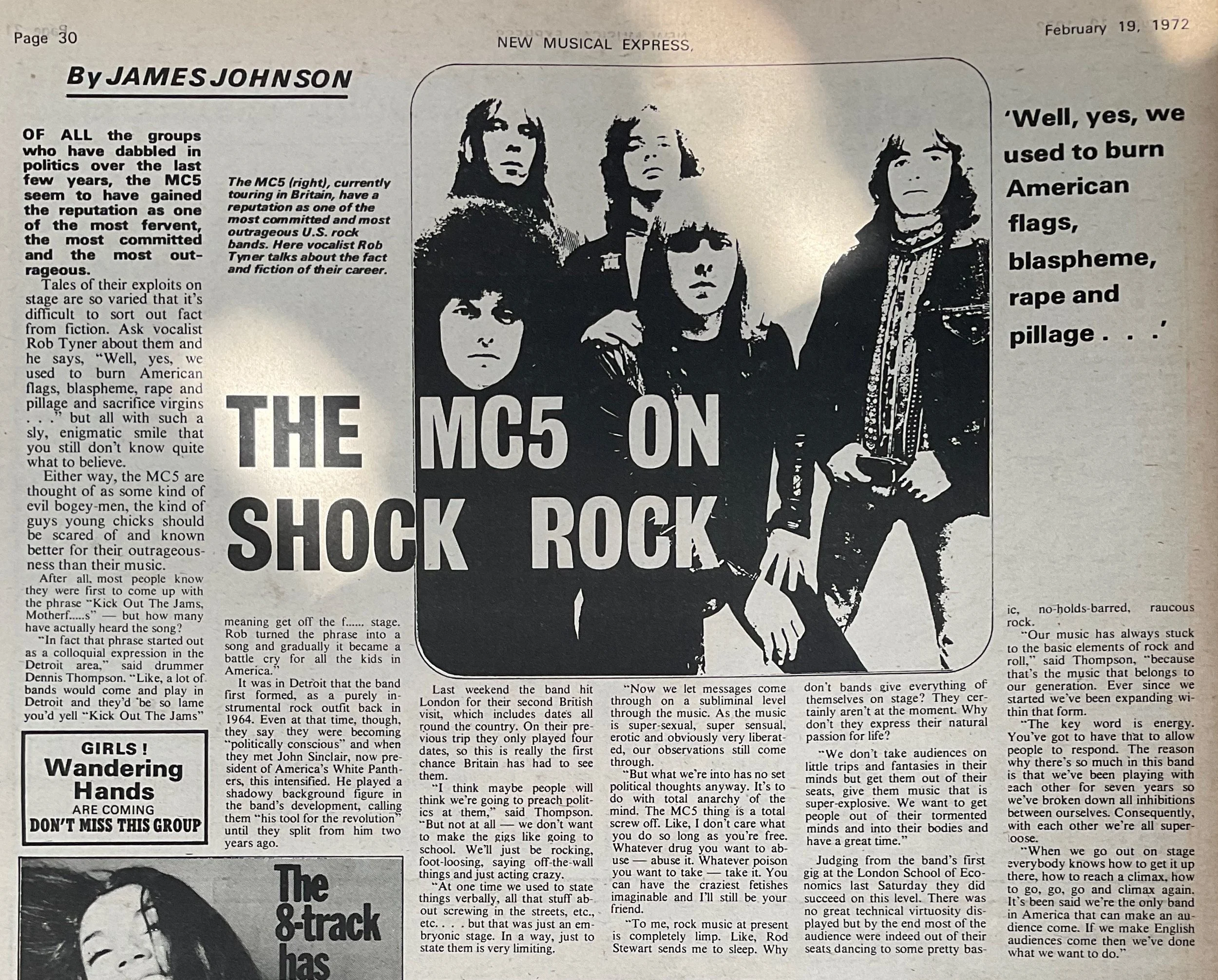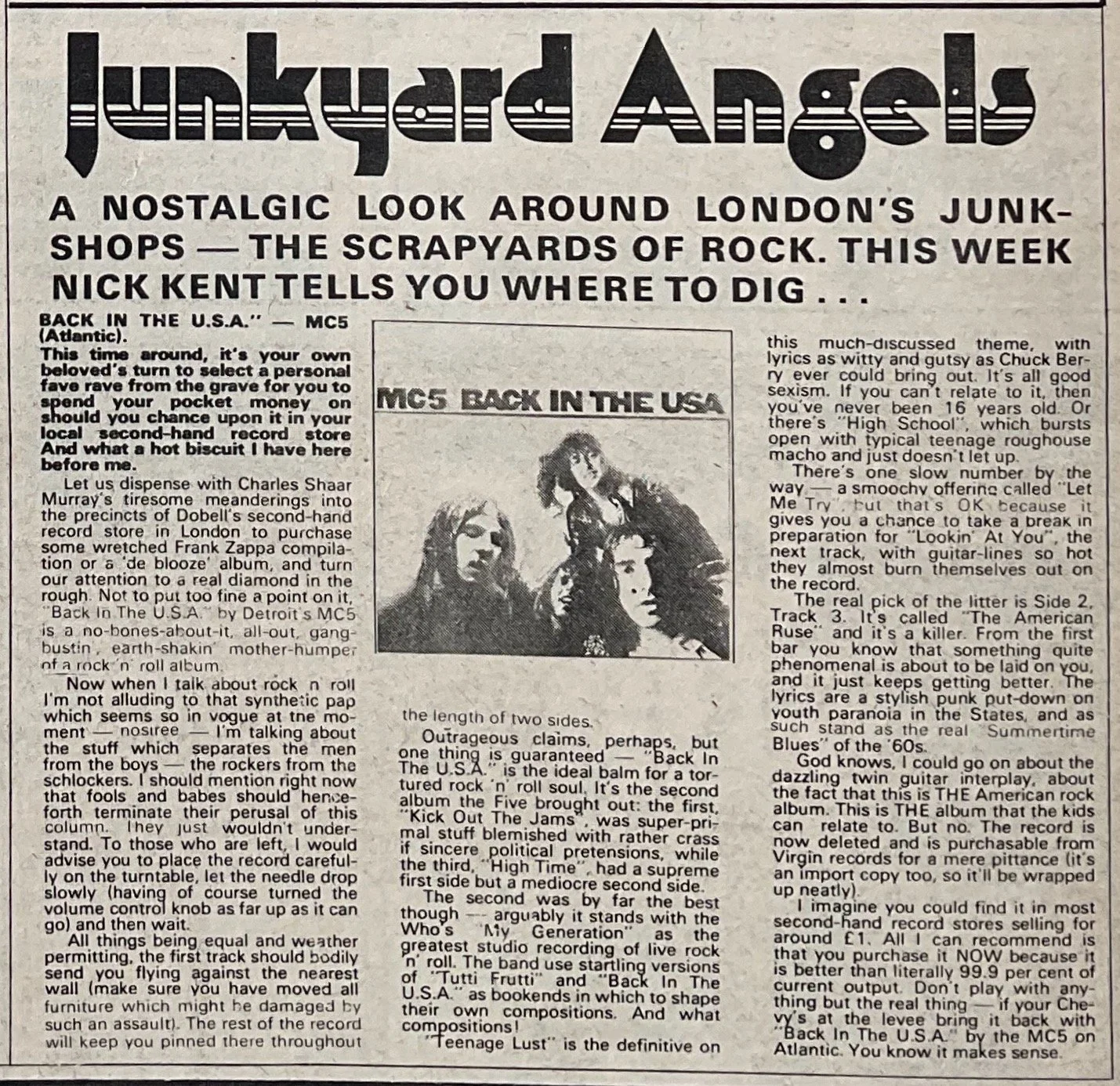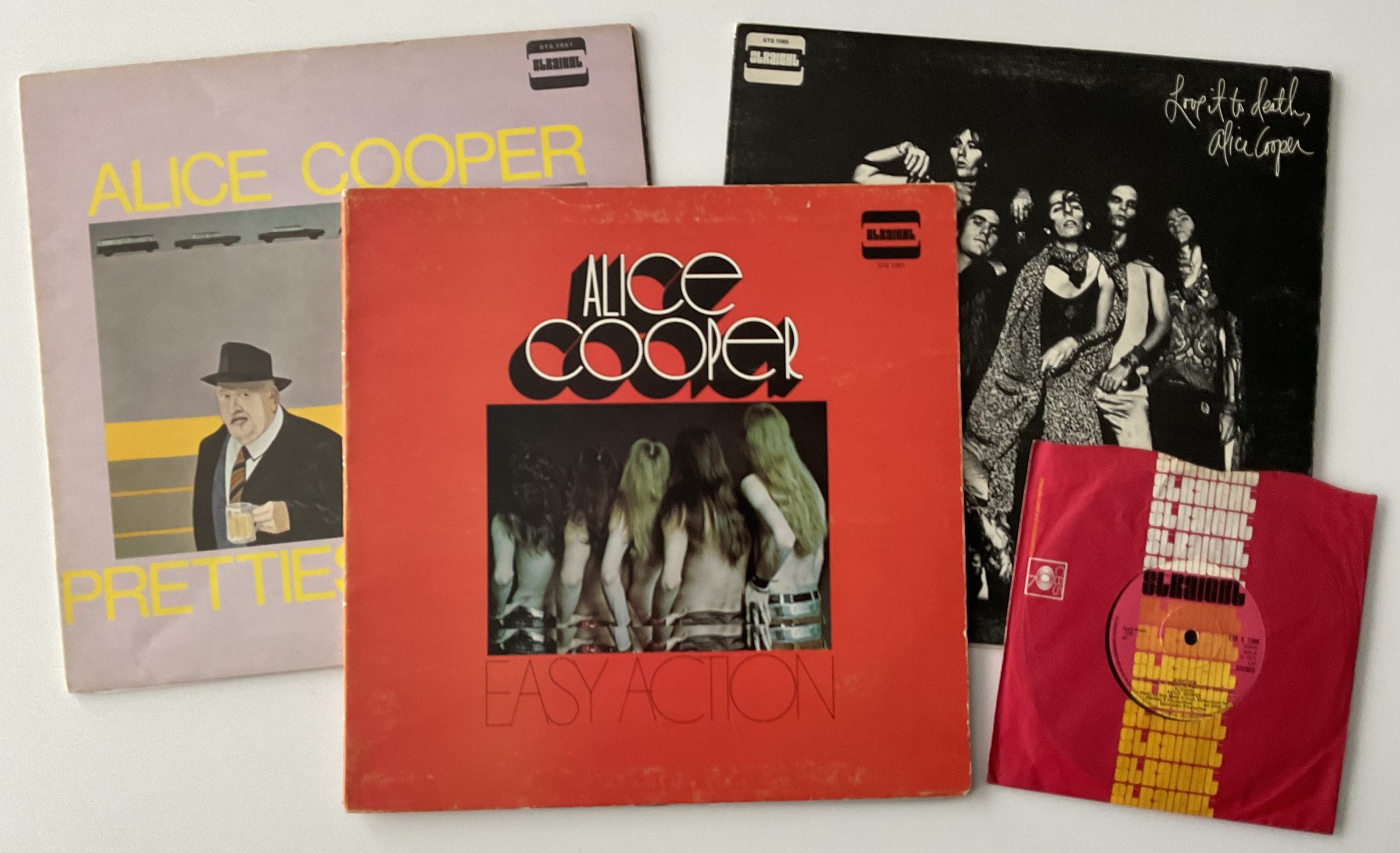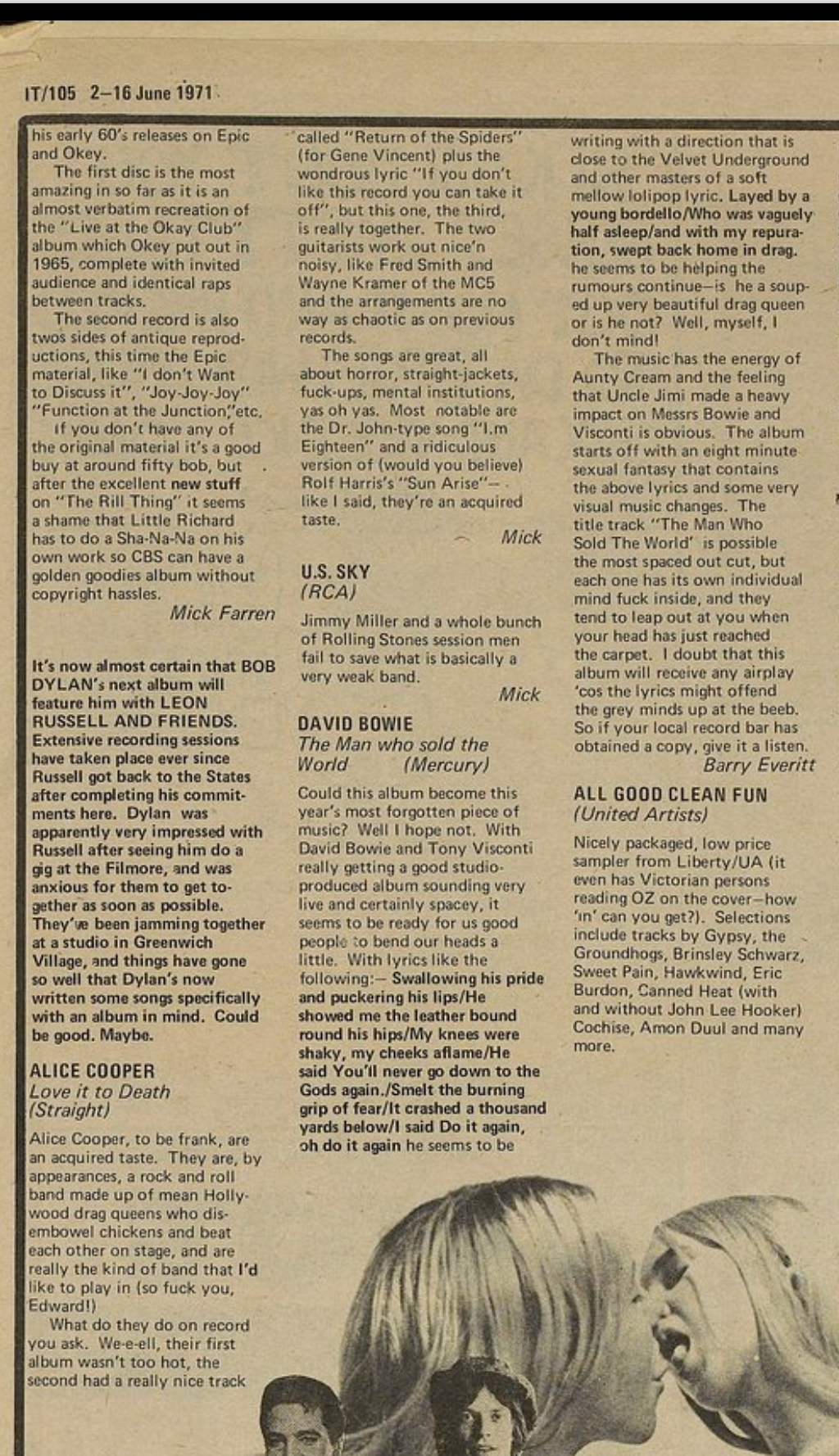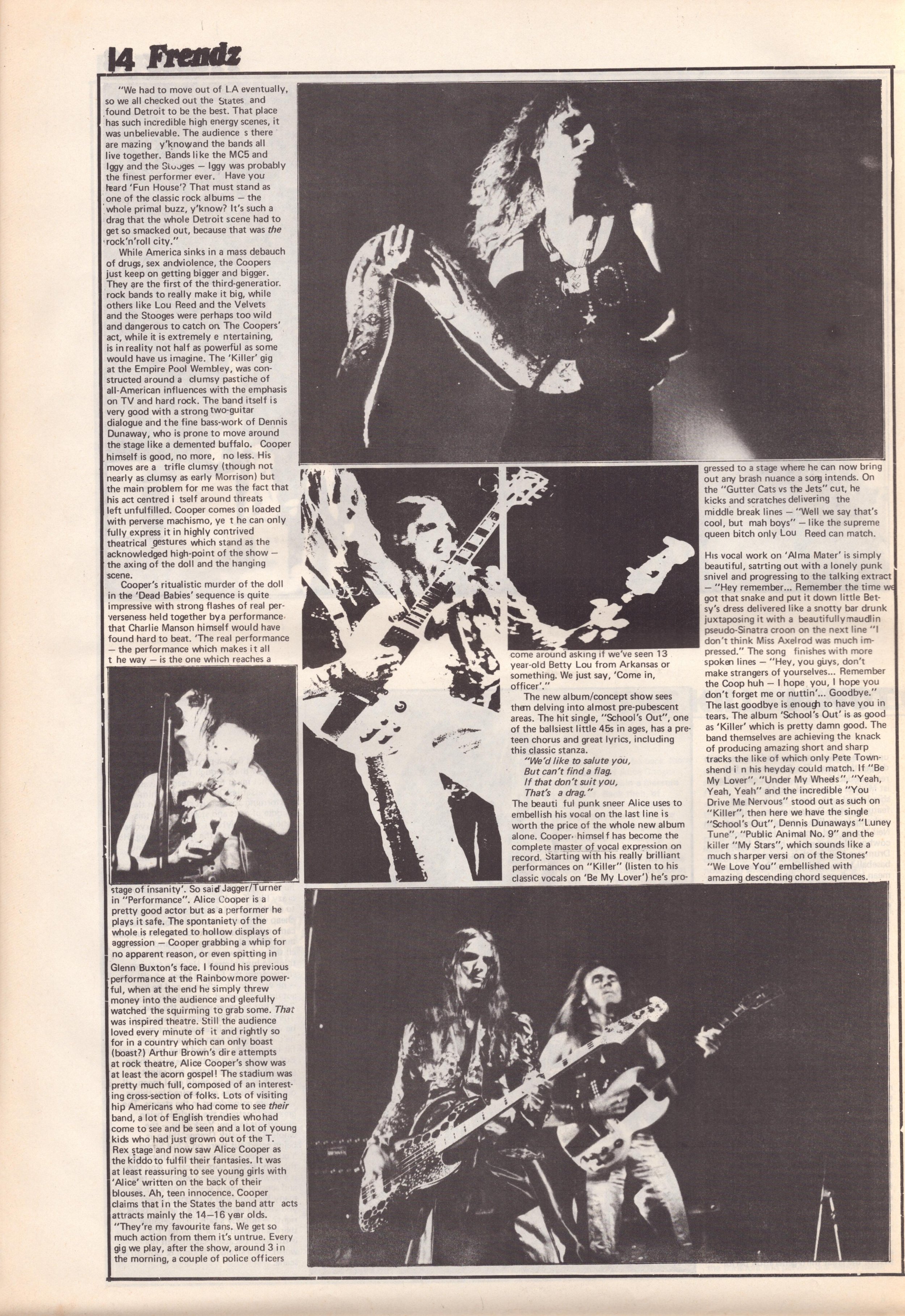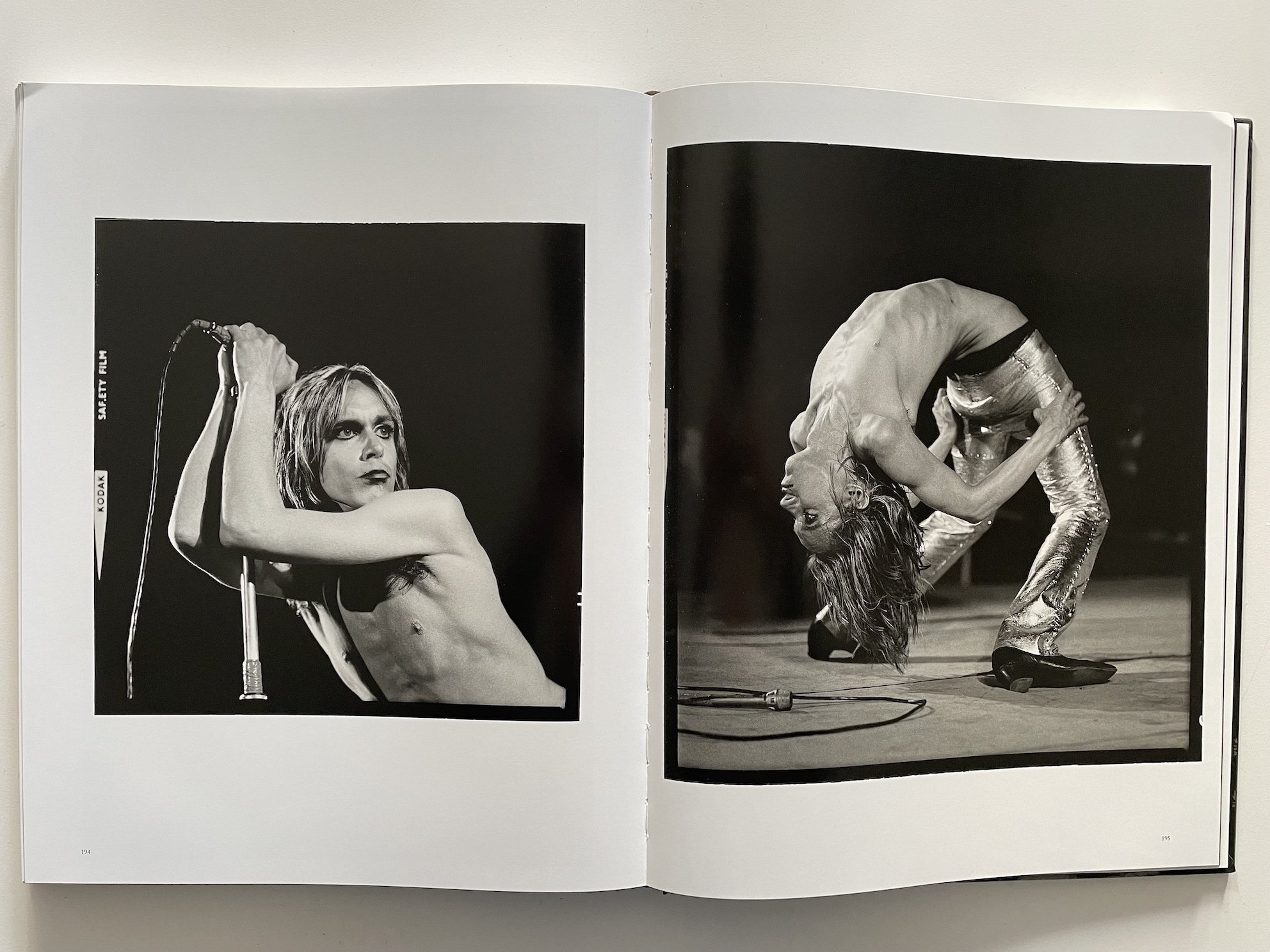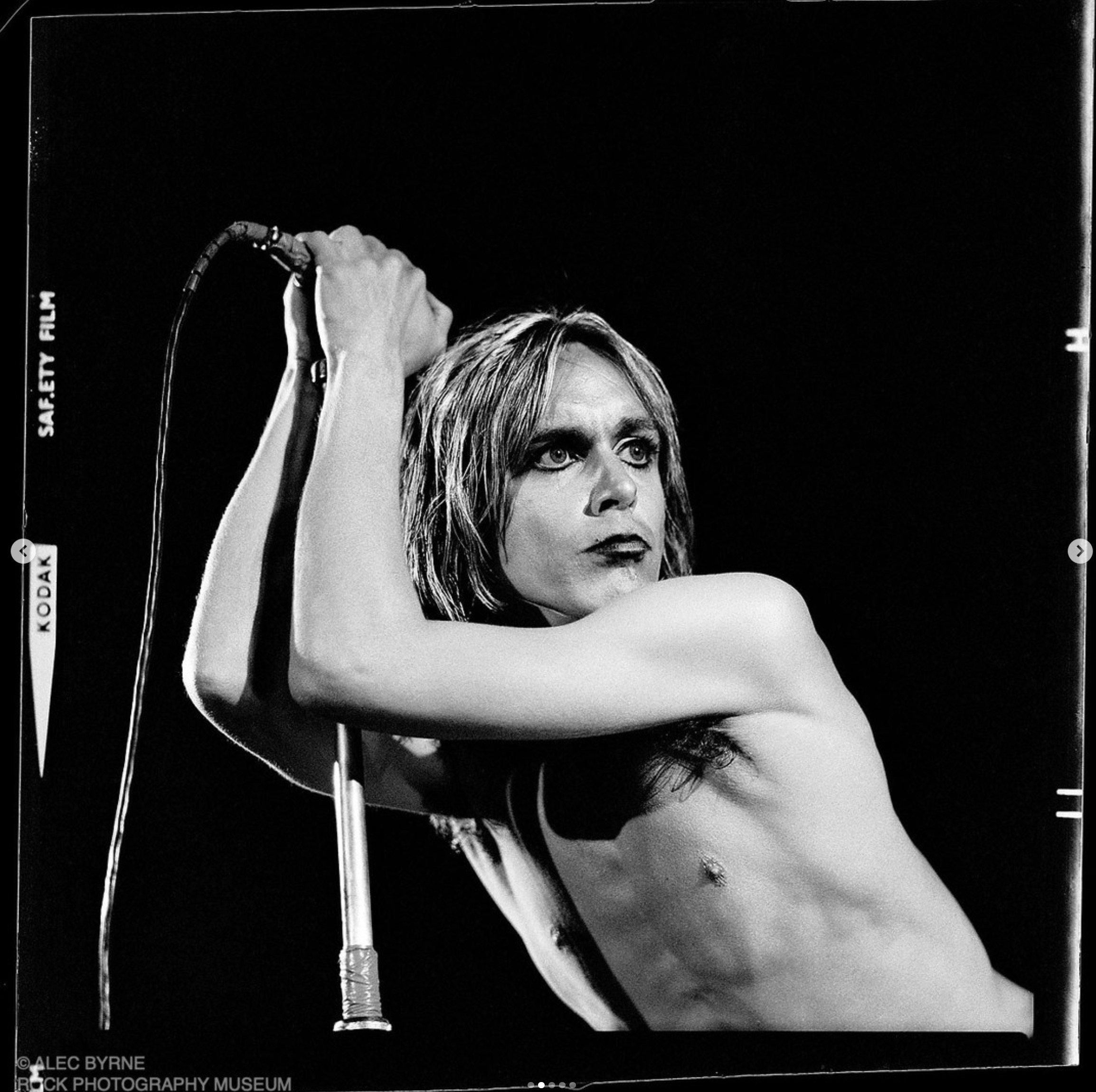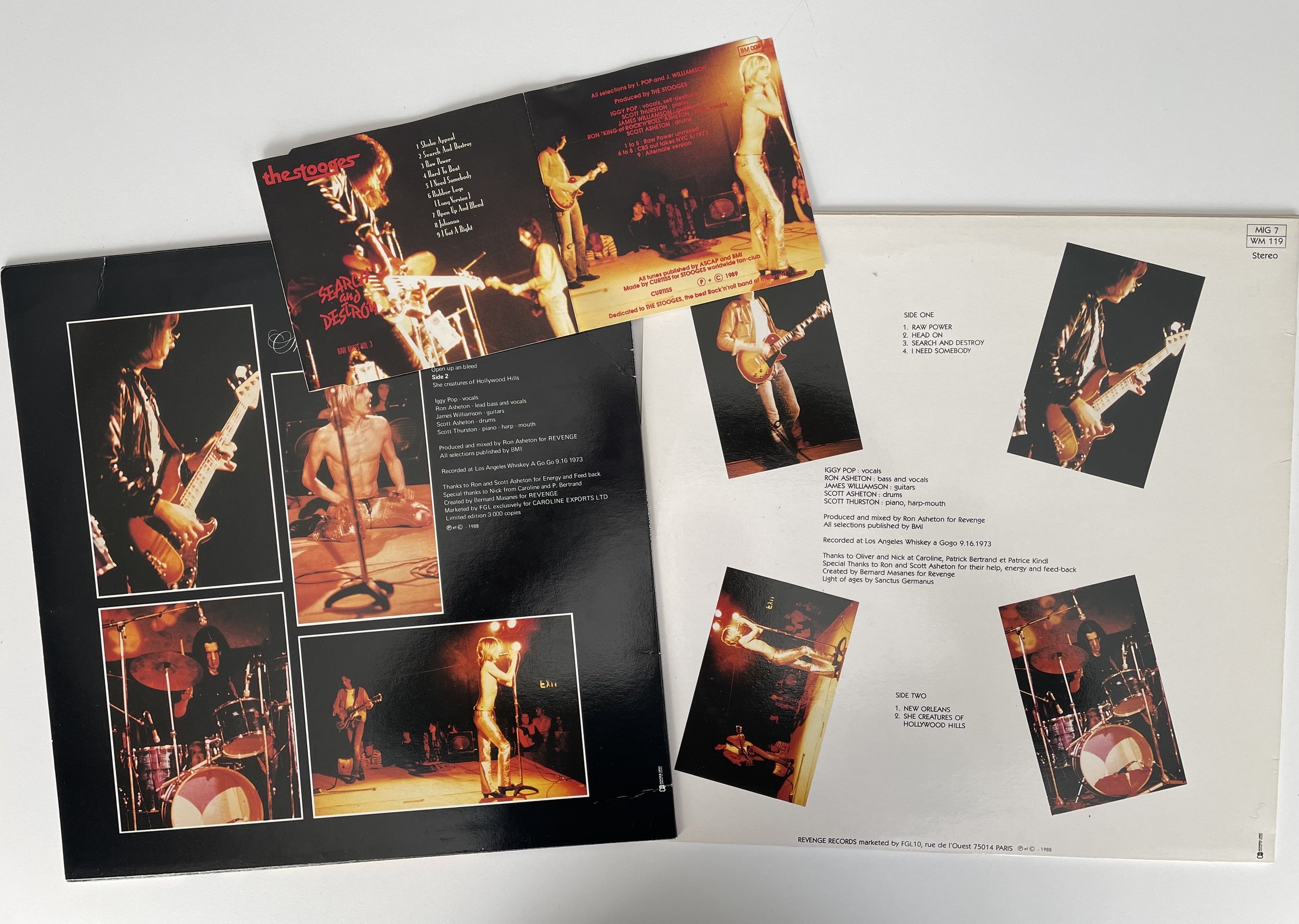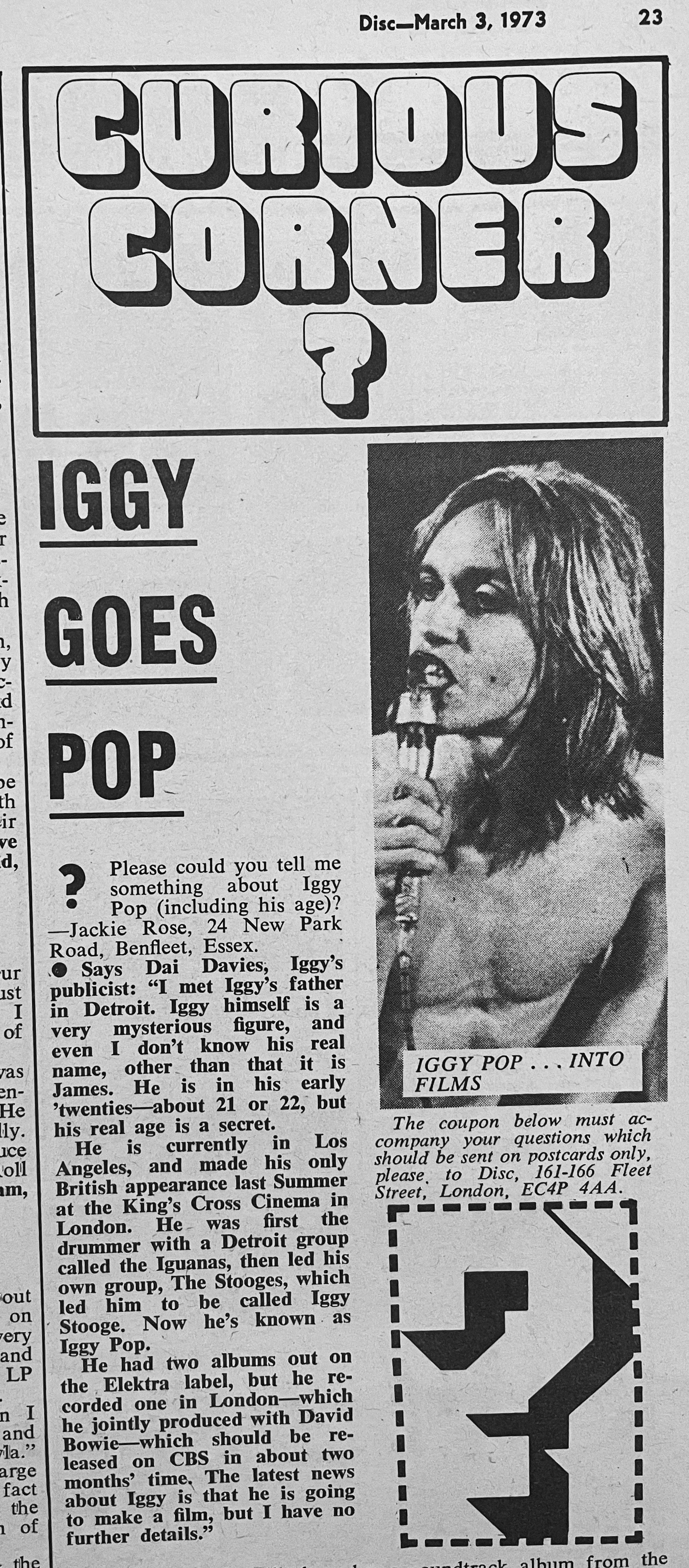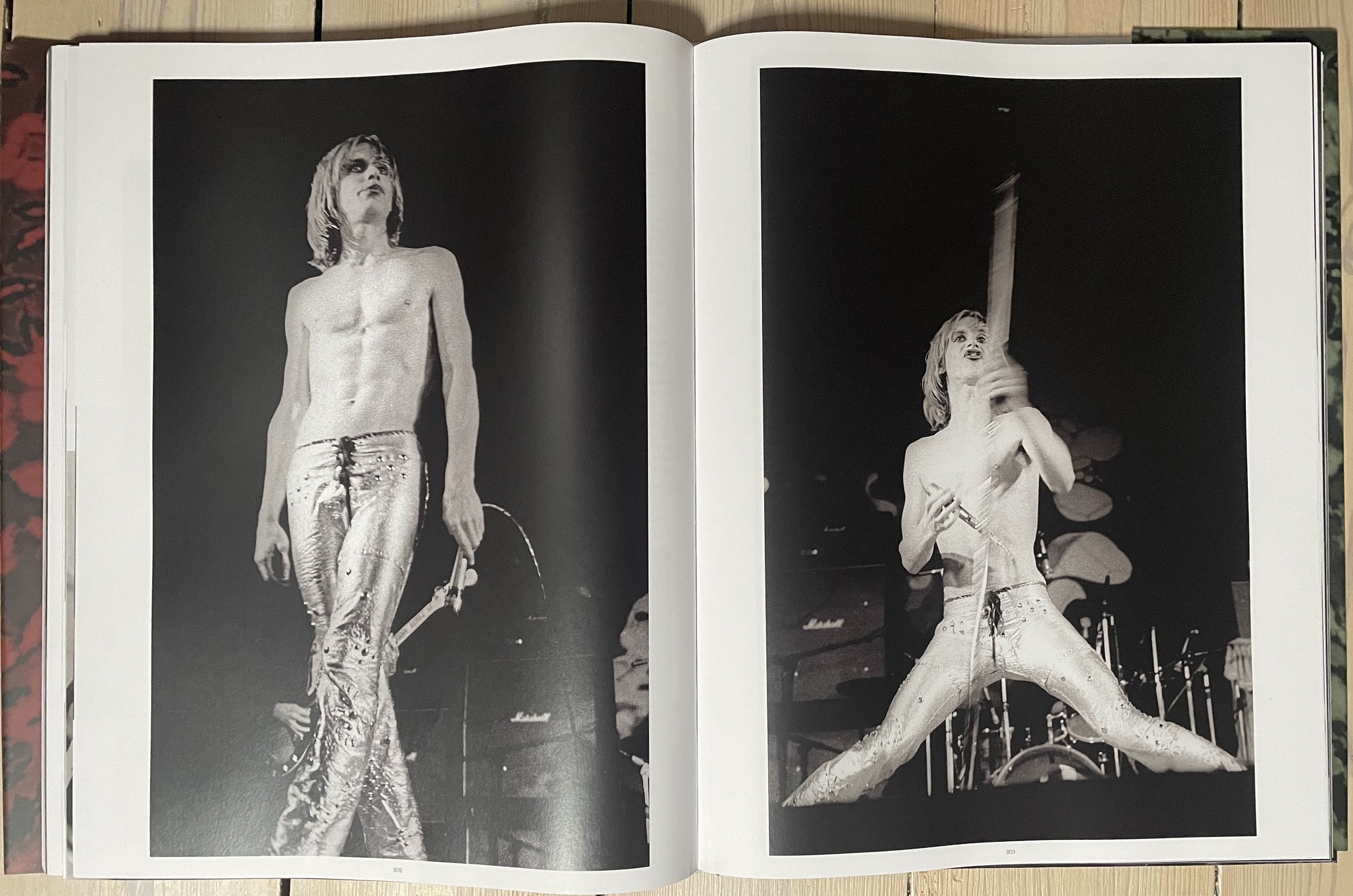In anticipation of my 13 page epic tale of the MC5 in Britain 1972 — Ugly Things #66 (Summer 2024) — here’s a list of the gigs the band played in the UK as they neared the end of their tumultuous career: 4 shows in 1970 and circa 36 in 1972
The Five’s second visit to the UK was chaotic and without record company support. Gigs were announced and then cancelled. Sometimes the band turned up late and played only one number, sometimes they didn’t even get past the soundcheck. Not every date listed here is confirmed though for most shows I have at least two or three pieces of evidence that they did take place. I expect there are some omissions, ad hoc appearances, but as of today it is the most comprehensive list we have. A fair few of the shows were reviewed in the weekly music press and I quote from these and a good number of news stories and interviews in ‘MC5 Live On Saturn, London 1972’, which is fully referenced.
Melody Maker (August 8, 1970)
1970
Zigzag (August 1970)
Disc and Music Echo (August 8 1970)
July 25 Phun City, Sussex
July 26 Roundhouse, London
July 31 Marquee, London
August 4 Speakeasy, London
The Speakeasy, London photo: Noel Shearer
Music Now (August 15 1970)
1972
February 5 (Sat) London School of Economics, London
"When we go out on stage everybody knows how to get it up there, how to reach a climax, how to go, go, go and climax again.It's been said we're the only band in America that can make an audience come. If we make English audiences come then we've done what we want to do."
February 11 (Fri) Friars, Aylesbury
February 13 (Sun) The Greyhound, Croydon (Michael Davis’ last performance)
Croydon’s White Panther Party UK get disgruntled . . . full account HERE
February 17–22 France
February 24 (Thur) Corn Exchange, Cambridge
February 25 (Fri) Lanchester Poly, Coventry
February 27 (Sun) Barbarella’s Birmingham
February 29 (Tue) Flamingo, Redruth
March 1 (Wed) Plymouth Polytechnic
March 3 (Fri) Seymour Hall, London
March 4 (Sat) Odeon, Canterbury
March 8–23 France/Germany
March 23 (Thur) Speakeasy, London
Sounds gig list
April/May USA
June 1 (Thur) City Hall, Leeds
June 3 (Sat) Clitheroe Festival, Clitheroe
Manchester Evening News
June 5 (Mon) Magee University, Derry
NME gig list
June 7 (Wed) The Stadium, Liverpool (unconfirmed and unlikely as the Five are not listed in adverts the Stadium ran in the Liverpool Echo)
June 9 (Fri) Guild Hall, Northampton
NME
June 10 (Sat) Kings Cross Cinema, London
June 11 (Sun) Letchworth Youth Centre, Letchworth
Time Out listing
June 12 (Mon) Trinity College, Cambridge
Sounds
June 16 (Fri) Edgehill Rag Ball, Top Rank, Liverpool
Liverpool Echo
June 18 (Sun) Wake Arms, Epping
June 19 (Mon) York City Rowing Club, Lendal Bridge, York
Melody Maker
June 23 (Fri) Penthouse, Scarborough
June 24 (Sat) Hornsea Rock, Hull
June 27 (Tues) Merton College, Oxford
June 28 (Wed) Greyhound, Fulham Palace Road, London
June 29 (Thur) Kingston Polytechnic, London
Time Out
June 30 (Fri) Bedford College, London
July 1 (Sat) St Albans City Hall, St Albans
July 3-9 (Monday thru Sunday inc.) Bumpers, Coventry St. London
Nick Kent . . . NME October 21 1972
Bumpers Club hostesses . . . promo photograph circa late 1971
July 12–22 Holland/Belgium
Rob Tyner glams it up in Wembley
August 5 Rock ’n’ Roll Show, Wembley
Though listed/advertised/rumoured the MC5 didn’t appear at
February 10 Corn Exchange, Cambridge
February 12 Mardi Gras Club, Liverpool
March 5 Implosion, Roundhouse, London
September 16 Pier Pavilion, Felixstowe
September 23 Windsor Arts Festival, Windsor
November 16 Sundown, Mile End, London
December 2 Epsom Baths Hall, Epsom
December 9 LSE, London




